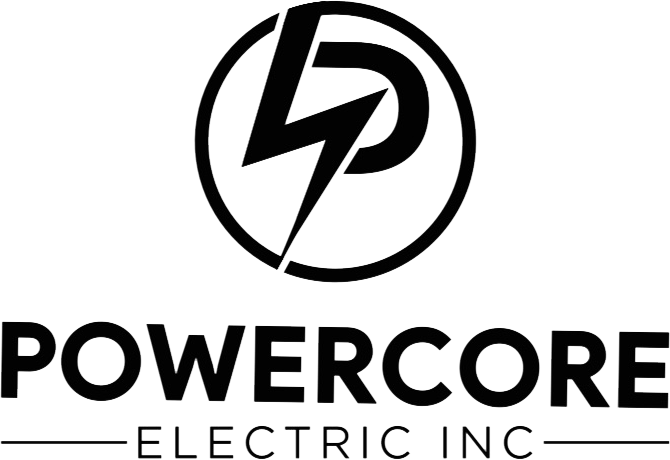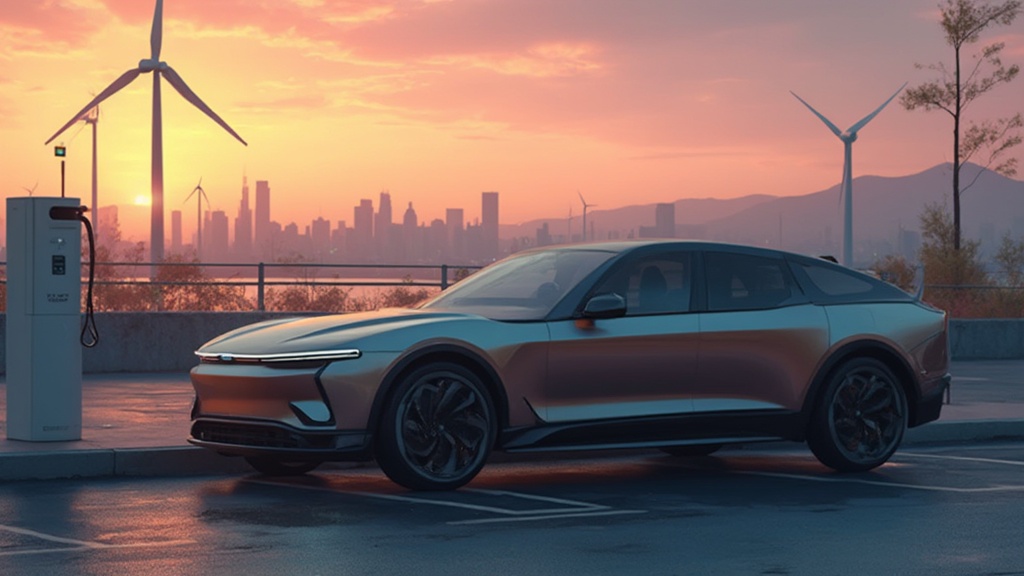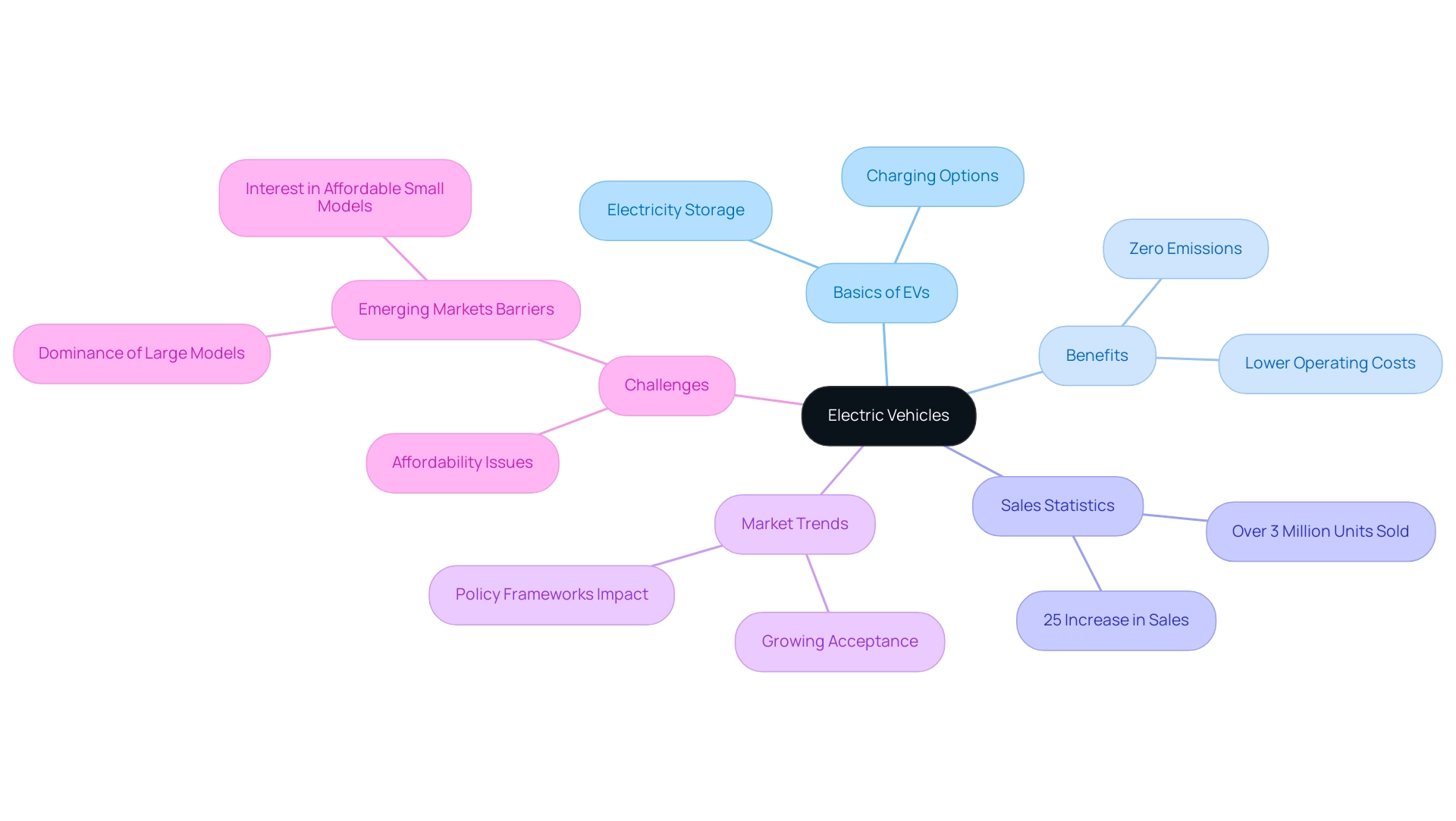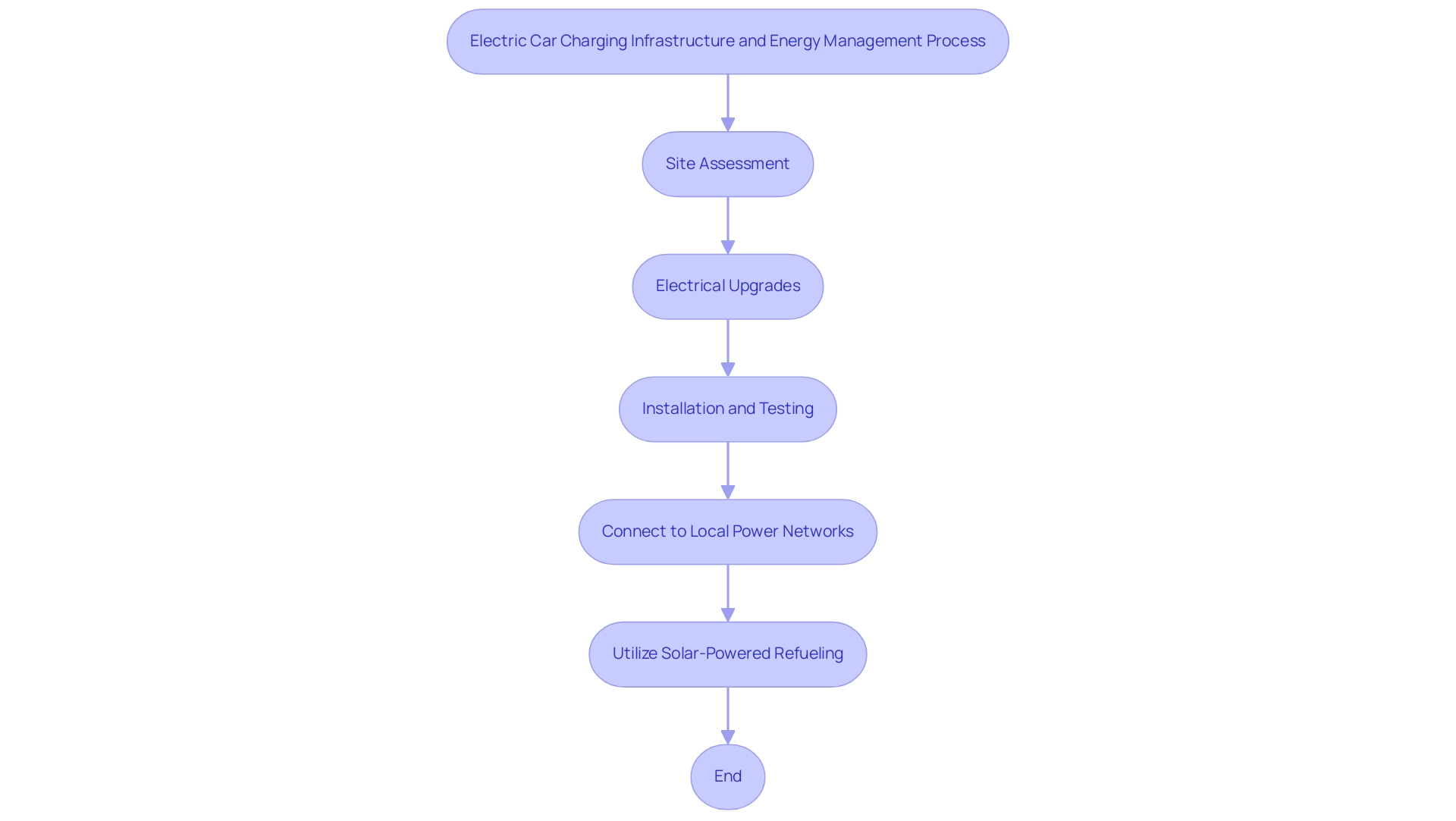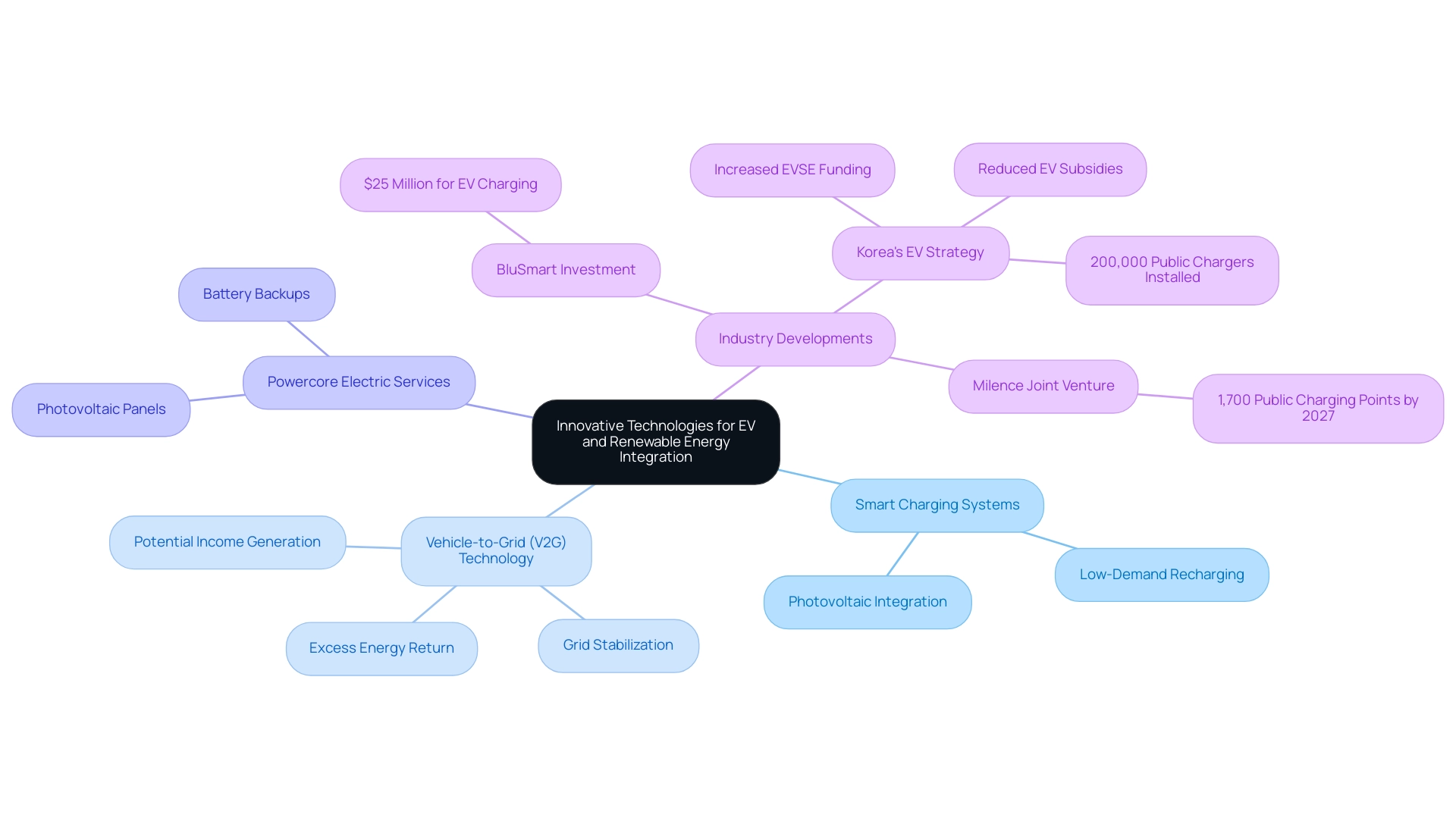Introduction
As the world shifts towards a more sustainable future, electric vehicles (EVs) have emerged as a key player in the quest for cleaner transportation. With their ability to reduce greenhouse gas emissions and lower operating costs, EVs are becoming increasingly popular among homeowners looking to make eco-conscious choices.
The integration of renewable energy sources, such as solar power, further enhances the benefits of electric vehicles, allowing homeowners to charge their cars with clean energy right from their rooftops.
This article explores the basics of electric vehicles, the importance of charging infrastructure, and how innovative technologies are paving the way for a greener tomorrow. By understanding these elements, homeowners can not only contribute to a healthier planet but also enjoy the financial perks that come with embracing this sustainable lifestyle.
Understanding Electric Vehicles: Basics and Benefits
Electric modes of transport (EVs) represent a significant advancement in sustainable transportation, utilizing electricity stored in batteries that can be conveniently charged at home or at public stations. A major advantage of EVs is their zero tailpipe emissions, making them a cleaner alternative to traditional gasoline transports. This transition not only aids in reducing greenhouse gas emissions but also offers lower operating costs, appealing to eco-conscious homeowners.
Recent statistics show that electric car sales surged by approximately 25% in the first quarter of 2024 compared to the previous year, with over 3 million units sold, indicating a growing acceptance of EVs in daily life. Additionally, as the market matures, policy frameworks are shaping trade flows and the sustainability of EV battery usage. Jane Smith, CFO, stated, ‘We expect significant growth next quarter,’ reflecting optimism in the EV sector.
However, challenges persist in emerging markets, where affordability remains a barrier to widespread adoption; for instance, in countries like India and Indonesia, larger models dominate sales, though interest in affordable small models is on the rise. Combining electric car renewable energy with EVs, such as resources from Powercore Electric Inc., improves these advantages by enabling homeowners to recharge their cars using clean resources. Powercore Electric Inc. offers solar panels and EV power stations, providing eco-conscious homeowners with the tools to maximize their sustainability efforts.
Comprehending these links assists homeowners in recognizing the financial and ecological benefits that electric car renewable energy options can provide.
Building the Infrastructure: Charging Networks and Energy Management
To effectively integrate electric car renewable energy solutions, homeowners should prioritize establishing a dependable refueling network. A great first step is to install a Level 2 home power station, which significantly reduces wait times compared to standard outlets. The installation process typically involves:
- A site assessment to determine the best location
- Necessary electrical upgrades to support the charger
- The final installation and testing to ensure safety and functionality
As the global stock of home devices for electric vehicles is projected to soar from 27 million in 2023 to over 270 million by 2035, enhancing personal refueling capabilities is more important than ever. By 2035, the share of electricity from devices other than home units is anticipated to reach nearly 45%, emphasizing the increasing significance of public options. Becoming part of local power networks can also offer extra access to solar-powered refueling options for your electric car, facilitating the use of renewable energy to recharge while on the move.
Additionally, establishing a resource management system can enhance your renewable resource utilization by enabling you to plan recharging during peak sunlight production times. This proactive approach not only ensures that your electric car renewable energy is charged efficiently and sustainably but also aids in reducing reliance on fossil fuels, contributing to a cleaner environment for everyone. As highlighted by the Pew Research Center, despite having the most power supply stations of any state, California’s 43,780 individual public ports must serve the more than 1.2 million electric vehicles registered to its residents, illustrating the challenges faced in power infrastructure.
Furthermore, placing renewable power sources, like photovoltaic panels, near electric car renewable energy refueling stations can further improve the effectiveness of this integration, significantly alleviating pressure on the local power network and ensuring optimal battery performance for home power management. When evaluating battery choices for your residence, seek out batteries that provide high capacity and power ratings, as these will optimize your storage and management capabilities, ensuring that you can effectively utilize the power produced for your EV charging requirements.
Harnessing Renewable Energy: Powering EVs Sustainably
Homeowners have a wonderful chance to adopt sustainable power and charge their electric car with renewable energy through panel setups. By harnessing sunlight, you can generate clean electricity to charge your electric car, aligning with the principles of renewable energy and promoting a sustainable lifestyle. To genuinely enhance your setup, think about adding a battery storage system, like the Tesla Powerwall or LG Chem RESU, which are among the top options for effective power storage.
These systems enable you to store surplus power generated on sunny days for utilization at night or during cloudy conditions, ensuring you optimize your solar panel output. With this combination, you can enjoy the benefits of continuous EV power supply while significantly reducing your reliance on grid electricity. Considering that the share of electricity from non-home chargers is expected to rise to almost 45% by 2035, integrating your electric car renewable energy sources is not only practical; it’s a forward-thinking solution for the eco-conscious homeowner.
Moreover, as 85% of installers using NREL’s SolarAPP+ permitting software report that it makes permitting significantly easier, homeowners can feel more confident in the installation process. Furthermore, the installed capacity of chargers for heavy-duty transport is anticipated to attain 2,000 GW by 2035, emphasizing the growing infrastructure for electric transport refueling. A recent case study from Korea illustrates this trend, where increased funding for electric vehicle supply equipment (EVSE) has led to the installation of over 200,000 public chargers, enhancing the charging infrastructure and supporting homeowners looking to adopt electric car renewable energy solutions.
Furthermore, homeowners should consider eco-friendly cleaning options for their panels, such as biodegradable cleaners or DIY solutions using vinegar and water, to maintain efficiency and extend the lifespan of their systems. It’s also important to acknowledge how California’s building regulations and NEM 3.0 policies are changing the adoption of renewable power, making it easier and more affordable for homeowners to invest in green technology.
Innovative Technologies for EV and Renewable Energy Integration
Innovative technologies like smart charging systems and vehicle-to-grid (V2G) technology are making it easier than ever for homeowners to integrate electric car renewable energy with electric vehicles (EVs). Powercore Electric Inc. provides essential services such as photovoltaic panels and battery backups that enhance these technologies. As Luka Zorko, a digital marketer and former automotive journalist, highlights, ‘The future of mobility is connected with renewable resources, and these technologies are paving the way for a sustainable transition.’
Intelligent power systems enable you to plan your EV recharging during low-demand periods or when your photovoltaic panels are producing electricity, making certain you’re optimizing your power usage. Imagine powering your car while your solar panels are working their magic—it’s both economical and eco-friendly! Meanwhile, V2G technology takes things a step further by allowing your EV to send excess energy back to the grid, helping stabilize the grid and potentially providing you with extra income.
Notably, in January 2024, BluSmart announced a $25 million investment for nationwide expansion of EV charging infrastructure, underscoring the commitment to enhancing EV adoption and infrastructure. Additionally, Korea’s recent strategy of reducing EV subsidies while increasing funding for electric supply equipment (EVSE) has led to the installation of over 200,000 public chargers, significantly supporting EV adoption. By adopting these innovative technologies alongside Powercore Electric’s products, you’re not merely investing in an electric car renewable energy solution; you’re also amplifying your dedication to sustainable resources and improving your home’s power efficiency.
With thrilling advancements approaching, including governmental initiatives that promote renewable resource adoption, it’s evident that the future appears promising for environmentally aware homeowners who wish to spearhead the movement toward sustainability.
The Environmental and Economic Impact of EV Integration with Renewables
Combining electric car renewable energy with electric transport provides a wealth of ecological advantages. Not only do these technologies help reduce greenhouse gas emissions, but they also significantly improve air quality in our neighborhoods. For eco-conscious homeowners, the financial perks are equally enticing.
By transitioning to electric vehicles and investing in electric car renewable energy sources, you can:
- Reduce fuel expenses
- Benefit from tax incentives
- Possibly enhance your property value
For example, properties close to wind turbines or those fitted with photovoltaic panels have demonstrated an increase in value due to their connection with renewable resources, strengthening the economic case for homeowners contemplating this change.
Moreover, the ecological effect of such installations goes beyond merely generation. A case study on the effects of sunlight power on butterfly populations in Mediterranean agro-ecosystems illustrates the significance of biodiversity in planning these projects. This demonstrates that solar power not only supports clean objectives but also fosters healthy ecosystems.
It’s a win-win! As more of us adopt electric car renewable energy as eco-friendly alternatives, we strengthen our communities’ power security and resilience. Additionally, recent insights suggest that it will take roughly five years before gas-powered cars and electric cars reach price parity, making this an opportune time for homeowners to transition to electric car renewable energy solutions.
Remember what Alyssa Rade, the chief sustainability officer at Sustain.Life, noted:
It will be about five years before there’s price parity between gas-powered cars and EVs.
Furthermore, as we consider resource constraints in a hydrogen economy based on renewable power sources, being informed about the challenges and opportunities in this transition is crucial. By being proactive about these choices, you can take pride in your role in fostering a sustainable future for generations to come.
To further enhance your renewable power journey, consider investing in a Tesla home charger, which can streamline your electric vehicle charging at home. Furthermore, comprehending how photovoltaic panels operate will assist you in maximizing their efficiency and advantages. Don’t forget to explore available government programs that can assist with your solar energy investments, as well as the importance of regular solar panel cleaning services to maintain optimal performance.
With these resources, you can ensure a smooth transition to a more sustainable lifestyle.
Conclusion
The shift towards electric vehicles (EVs) marks a significant step in creating a more sustainable future for transportation. By understanding the fundamentals of EVs and their integration with renewable energy sources, homeowners can play an active role in reducing greenhouse gas emissions and benefiting from lower operating costs. The rising popularity of EVs, supported by a growing infrastructure of charging stations and innovative technologies, highlights the importance of making eco-conscious choices.
Establishing a reliable charging network at home, particularly through Level 2 charging stations and energy management systems, empowers homeowners to charge their vehicles efficiently and sustainably. Coupled with solar energy solutions, such as solar panels and battery storage systems, this integration not only maximizes the use of clean energy but also enhances the overall efficiency of energy consumption.
As the environmental and economic advantages of embracing electric vehicles and renewable energy become increasingly evident, the opportunity to reduce fuel costs, increase property value, and improve local air quality is more appealing than ever. By taking proactive steps and investing in technologies that support sustainability, homeowners can contribute to a cleaner planet while enjoying the financial benefits of this transition.
In conclusion, the journey towards a sustainable lifestyle through electric vehicles and renewable energy is not just a trend; it is a vital pathway to a healthier future. Embracing these changes today will not only ensure a greener tomorrow but also foster a stronger community committed to environmental stewardship.
